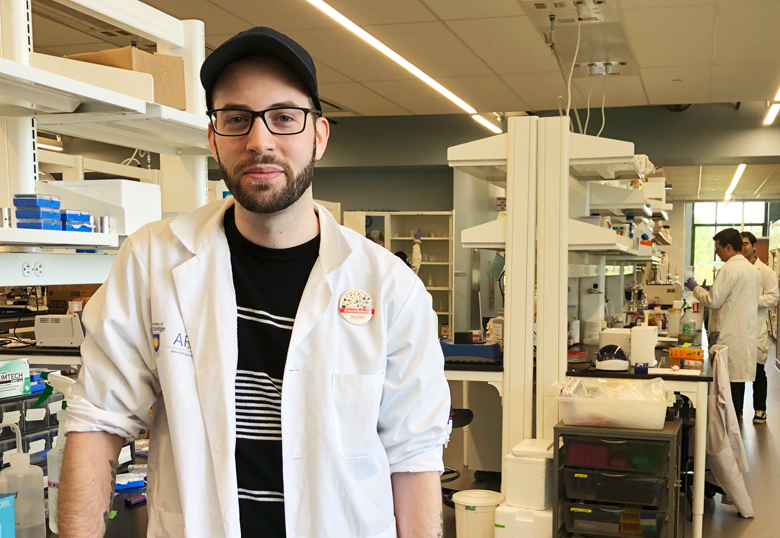Graduate students in biophysics at the University of Lethbridge have joined their counterparts at the University of Montana in Missoula to form the first student Biophysical Society chapter in Western Canada, and the first that spans borders.
The connection across the Canada-United States border came about since one of the chapter sponsors, Dr. Borries Demeler, a U of L professor, is cross-appointed at the University of Montana.

“We wanted to create a partnership between these two universities and a way for biophysics students to communicate with each other, perhaps to talk about their research, the techniques they have available at each university and how each technique could help the students in their research,” says Tyler Mrozowich, a PhD candidate in Dr. Trushar Patel’s lab and chapter president. “Biophysics is a really under-represented subdiscipline in chemistry and biochemistry and physics as a whole. We want to highlight the different areas of research that biophysics is involved in and get people interested in the field.”
As Mrozowich explains, biophysics concerns the physical properties of biological molecules and how they interact.
“A really simple example is hemoglobin, the protein inside us that carries oxygen throughout the body,” he says. “The oxygen molecule will bind to the hemoglobin but the actual event where they interact, that’s biophysics. That is governed by physical properties of both of these molecules. In order for us to understand how it actually works, we have to study it and know how it interacts.”
Biophysics is an important element of health sciences research and is involved in everything from drug delivery and vaccine development to personalized medicine.
“Drug delivery is a very difficult aspect of medicine,” says Mrozowich. “It’s really easy to put a drug in a closed system and have it interact with a molecule. A lot of drug delivery fails because the body has so many methods of getting rid of the drug. Biophysics can help by determining the strength of interactions and how much should be given to a patient to get it in the right area or to exploit certain unique features of a target, like a cancer cell.”
So far, the club has formed an executive and has roughly 10 members. Membership in the club is open to anyone who’d like to join. Mrozowich says the club plans to bring in guest speakers to share their research and to participate in outreach initiatives that show the community, especially school students, how biophysics impacts daily life.
“When you think about sciences, you think about chemistry, biology and physics,” he says. “There’s so much more out there we want to get people excited about.”
Anyone interested in joining can email Mrozowich, Patel or Demeler.
